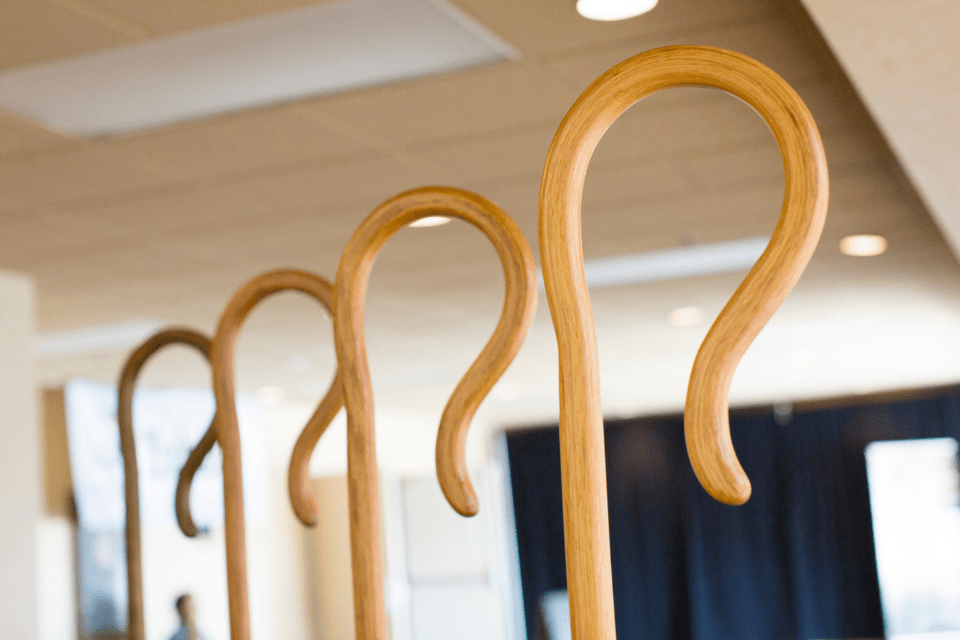Each newly elected bishop within the North Central Jurisdiction is gifted a homemade crosier, fashioned by a woodworker and retired elder, Rev. Art Scanson from the Dakotas Conference.
DOREEN GOSMIRE
Director of Communications, Dakotas Conference
BISMARCK, N.D. – Rev. Art Scanson, a retired elder of the Dakotas Conference, has found a ministry in woodworking. Scanson has handcrafted more than 20 crosiers for bishops in the North Central Jurisdiction and some bishops in other locations.
“I have been making the crosiers for the North Central Jurisdiction since 2000. Every bishop elected in the North Central Jurisdiction receives one,” said Scanson. “It is something I can do and fun to do.”
This year Scanson created three crosiers for the bishops that were elected to the episcopacy in Fort Wayne, Ind., where the North Central Jurisdiction Conference was held November 2-5, 2022. The bishops received them during Saturday morning’s consecration service. Read the story here; watch the service here.
The crosier is the symbol of the governing office of a bishop. In Western Christianity, the crosier, known as the pastoral staff, is shaped with a hooked end like a shepherd’s crook. A bishop bears this staff as “shepherd of the flock of God.” The term comes from the Latin root, crux, for cross since many early crosiers were fashioned with a cross at the end.

Strips of oak are laminated together to form each crosier. “Fourteen strips of oak wood, nine feet long, four inches wide, are glued together to create the long handle or shaft,” said Scanson. He described that each layer must be precisely placed and clamped into a jig within 30 minutes.
The hook is a little more involved. Smaller strips of wood, three inches long, are placed together like a web. One piece fits into another smaller piece in a jig to make the hook.
“It takes about 100 hours to make one crosier,” said Scanson.
Each of the crosiers comes with a base or stand. The base allows the crosier to stand straight wherever they are stationed.
“I have learned much about making the crosiers over the years. At first, I cut out the shape from a board. I now use the strips and lamination,” Scanson said. “Getting the base shaped so that the crosier will stand straight up and down requires a base that is crafted with two levels, cutting the wood with the grain, and precisely locating the placement of the cut-by-cut hole for the crosier.”

Scanson sews a black canvas carrying case for each crosier and a separate case for each base. The carrying case allows easy travel wherever the bishops want to use them.
“I sew the carrying bags using a Sears sewing machine that my wife Lorraine’s parents gave us 57 years ago. It works well,” Scanson said.
Different colors of stain are applied to the wood to give each crosier a unique look. Every crosier has four coats of polyurethane.
“Woodworking has always been a hobby for me,” said Scanson. “It became part of my ministry when I was the pastor of a church in Leonard, N.D. They didn’t have a cross, so I created one out of wood.”
Each bishop uses the crosiers in different ways. The crosier is often used when presiding at worship or church meetings. Some use them as décor in their office. Others use them at annual conference sessions as a symbol of spiritual leadership at worship and during business sessions.
“I will continue to do this as long as I am able and for as long as they ask,” said Scanson.
Last Updated on November 15, 2022

